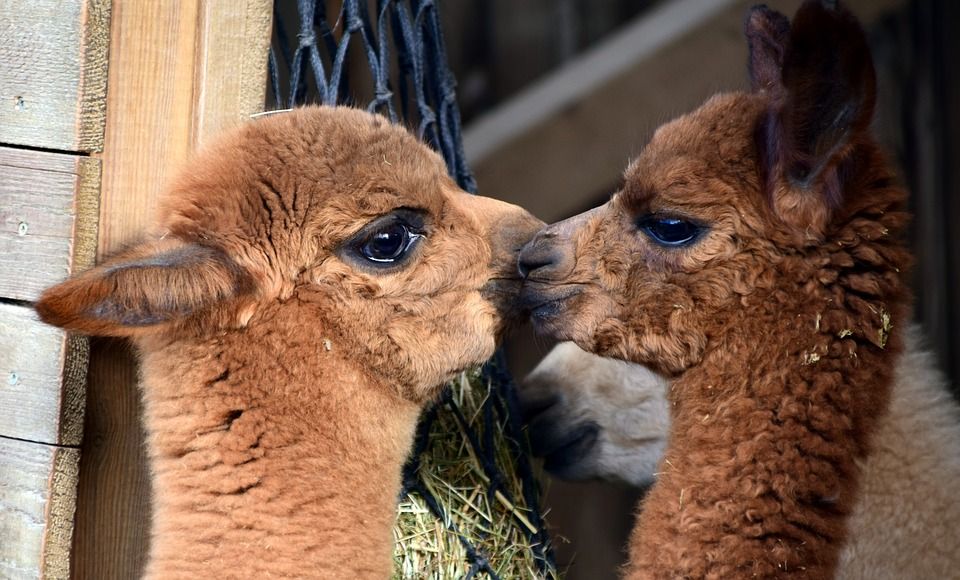Known for their friendly characters and the outstanding quality of their soft wool, alpacas are not a frequent sight in Croatia. Meet the cute expats and the man who brought them all the way from Peru
When you’re driving on any given highway in Croatia, look through the window, and there’s a good chance you’ll see a handful of animals scattered all over the fields and pastures spanning along the side of the road. Cows, sheep, goats or horses, casually nibbling on grass and going on about their business. What you’re not likely to see are alpacas – that is, unless that road takes you to Bjelovar, a city in continental Croatia.
The town of Veliko Trojstvo near Bjelovar is home to the first alpacas to ever come live in Croatia, reports Lokalni on April 10, 2018. Expats from Peru, they arrived to their new home owing to a local named Dejan Jalžabetić who decided to venture into alpaca-breeding four years ago. The idea was initially suggested by his friend from the Faculty of Agriculture; as soon as Dejan did his research and found out the South American animals are known as outstandingly gentle and friendly characters, the decision was made.
“Considering I own large pastures in Veliko Trojstvo, I was looking for animals that would graze the grass and thus take care of the upkeep. Sheep would have been a more normal choice, but I didn’t want to get animals that would have to go to slaughter later at some point. I found out about a [financial support] measure for novice farmers, and owing to that, I managed to acquire three alpacas from Italy last year”, said Jalžabetić.

Pixabay
Named Jerry, Achille and Christa, the merry trio wasn’t exactly easy to obtain. Alpacas are scarce in Europe as it is, and the existing handful of alpaca breeders aren’t willing to hand over their animals to just about anyone. No breeder will agree to sell their alpacas until they’ve got well acquainted with the buyer, who has to complete a seven-day course. Apart from education provided by breeders themselves, Jalžabetić had to take a class at the Croatian Veterinary Chamber, along with another course to get a certificate for transport of alpacas, signed by the minister of agriculture. Even the transport itself calls for a complex procedure: Jalžabetić was required to have the animals examined by a veterinarian first, then notify all vets working along the route he’d be taking to bring the alpacas to their new home.
The three pioneers, also the first alpacas to ever come live in Croatia, were recently joined by more friends. These days, you’ll find two male and eight female alpacas on the pastures in Veliko Trojstvo, most of them having arrived from Peru.
Jalžebetić soon realised all claims about alpacas being low-maintenance animals weren’t exactly true, to say the least. They have to live in a group of at least three, otherwise they’re likely to die of loneliness or fear. They’re also quite picky when it comes to their diet – they won’t eat just about anything, instead being very selective about the types of grass or hay they want to nibble on. Once they’ve decided the food is to their liking, they tend to overeat, which can lead to health complications or even a lethal outcome. They don’t have any upper teeth, meaning they’re unable to feed on anything too coarse or rigid in texture; their long necks prevent them from eating anything of an elongated shape, lest they could suffocate to death. The list goes on and on, but according to the farmer, they’re worth the trouble.
“The quality of alpaca wool is the best in the world, and it’s much more valuable than merino wool or cashmere. It also has anti-allergic qualities, which is why 99 percent of people can wear it without having a reaction. It’s used in the same way as plain wool – to make clothes, fashion accessories, toys or carpets, with a kilogramme of the final product manufactured from alpaca wool easily reaching a price of 1600 euro. Of course, freshly sheared wool is worth much less – from 20 to 40 euro per kilo, depending on the body part it was taken from, but that’s still a lot more than sheep wool is worth”, said Jalžabetić.
Take a look at some photos and a video of the cute alpaca expats here.







